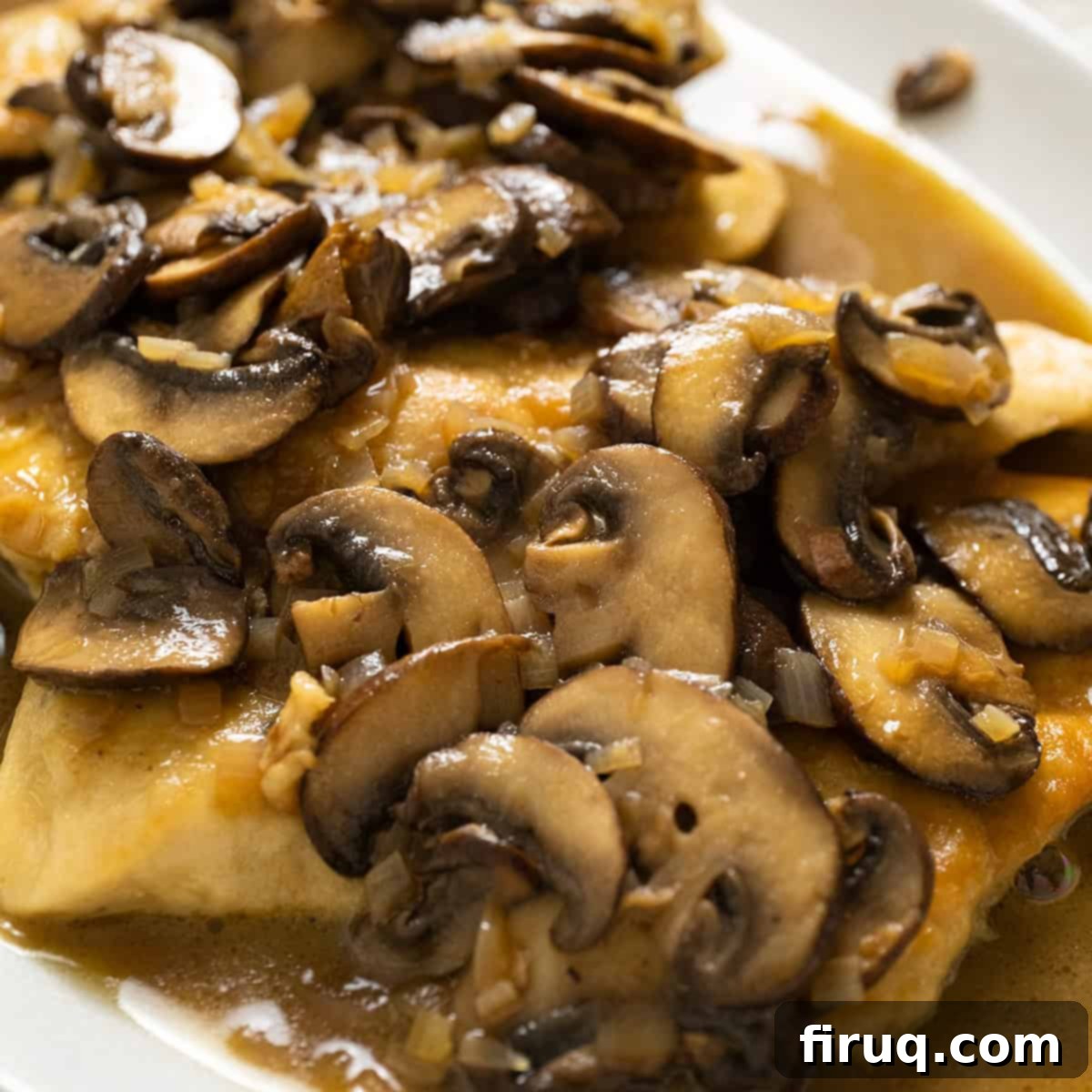Authentic Restaurant-Style Chicken Marsala: Master This Italian Classic at Home
Prepare to impress your family and friends with this incredible restaurant-style Chicken Marsala recipe, easily made right in your own kitchen. Forget dining out; this dish brings the rich, savory flavors of an Italian eatery directly to your table. Featuring succulent, lightly fried chicken cutlets generously coated in a luxurious, silky mushroom sauce made with aromatic baby bella mushrooms and genuine Marsala wine, it’s a culinary masterpiece that’s surprisingly straightforward to achieve.
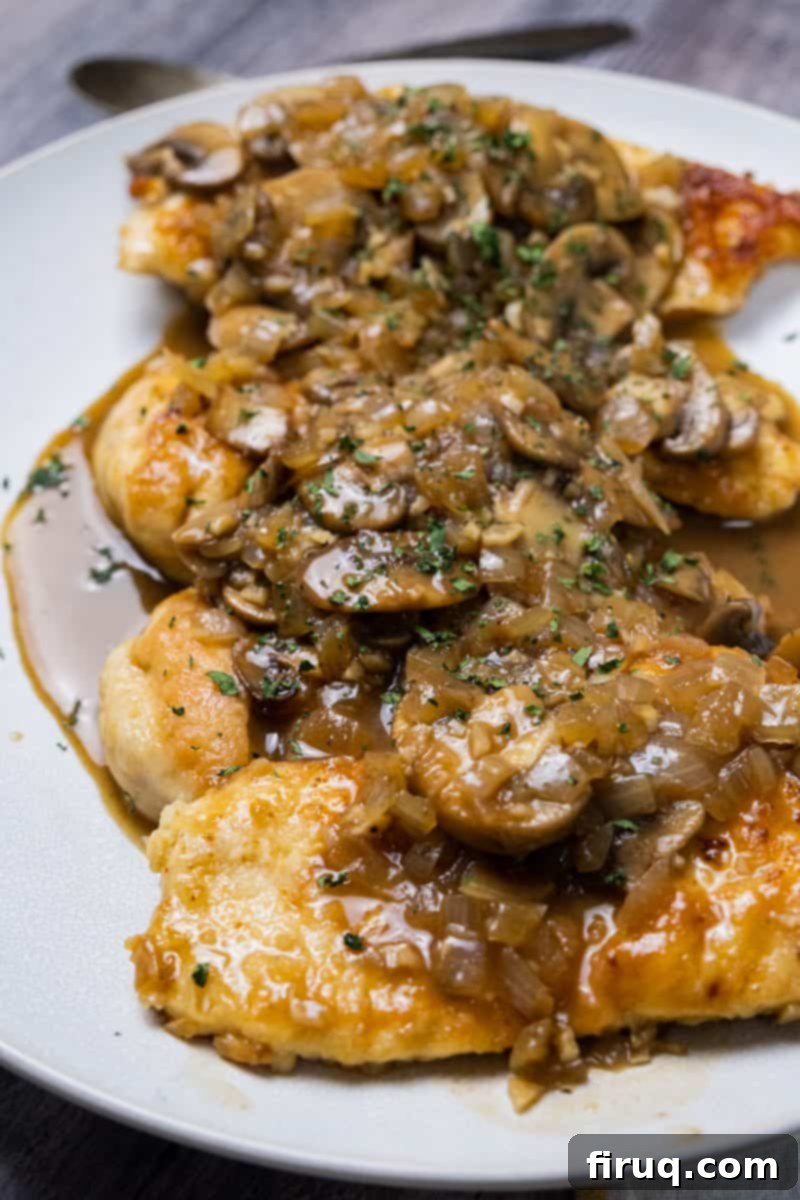
Craving more exquisite dishes you’d typically find at a high-end Italian restaurant? Be sure to explore our recipes for Classic Italian Minestrone or our robust Classic Linguine Alla Puttanesca.
[feast_advanced_jump_to]
The Allure of Italian Restaurant-Style Meals at Home
There’s something uniquely comforting and satisfying about savoring an authentic Italian dish that transports you straight to a bustling trattoria. For many, Chicken Marsala, alongside its cousin Chicken Saltimbocca, holds a special place as a restaurant favorite – dishes often reserved for special occasions or nights out. Growing up, my mom, perhaps wisely anticipating a mushroom-induced protest from us kids, usually opted for classics like The BEST Chicken Piccata at home. Yet, the appeal of Marsala never faded.
The origins of Marsala wine itself are rooted in Sicily, Italy, specifically around the city of Marsala. While “Chicken Marsala” as we know it is largely an Italian-American creation, it’s a delectable variation of the traditional Italian scaloppini dish. This culinary innovation is thought to have been influenced by English settlers in Italy, who, in areas like Trapani (also famous for Busiate with Pesto Trapanese), adapted local ingredients like Marsala wine to create rich, savory pan sauces. Understanding this history only deepens the appreciation for the complex flavors in every bite.
Creating perfect reduction sauces, like the one in Chicken Marsala, can sometimes seem daunting. The goal is a beautifully thickened sauce that clings to the chicken, without separating into an oily mess. Patience truly is a virtue here. Rushing the process, especially with delicate pan sauces like our Restaurant-Style Chicken Francese, can compromise the texture and flavor. Take your time, observe the sauce as it simmers and reduces, and you’ll be rewarded with a magnificent dish that your family will adore.
Essential Ingredient Notes & Savvy Substitutions for Your Marsala
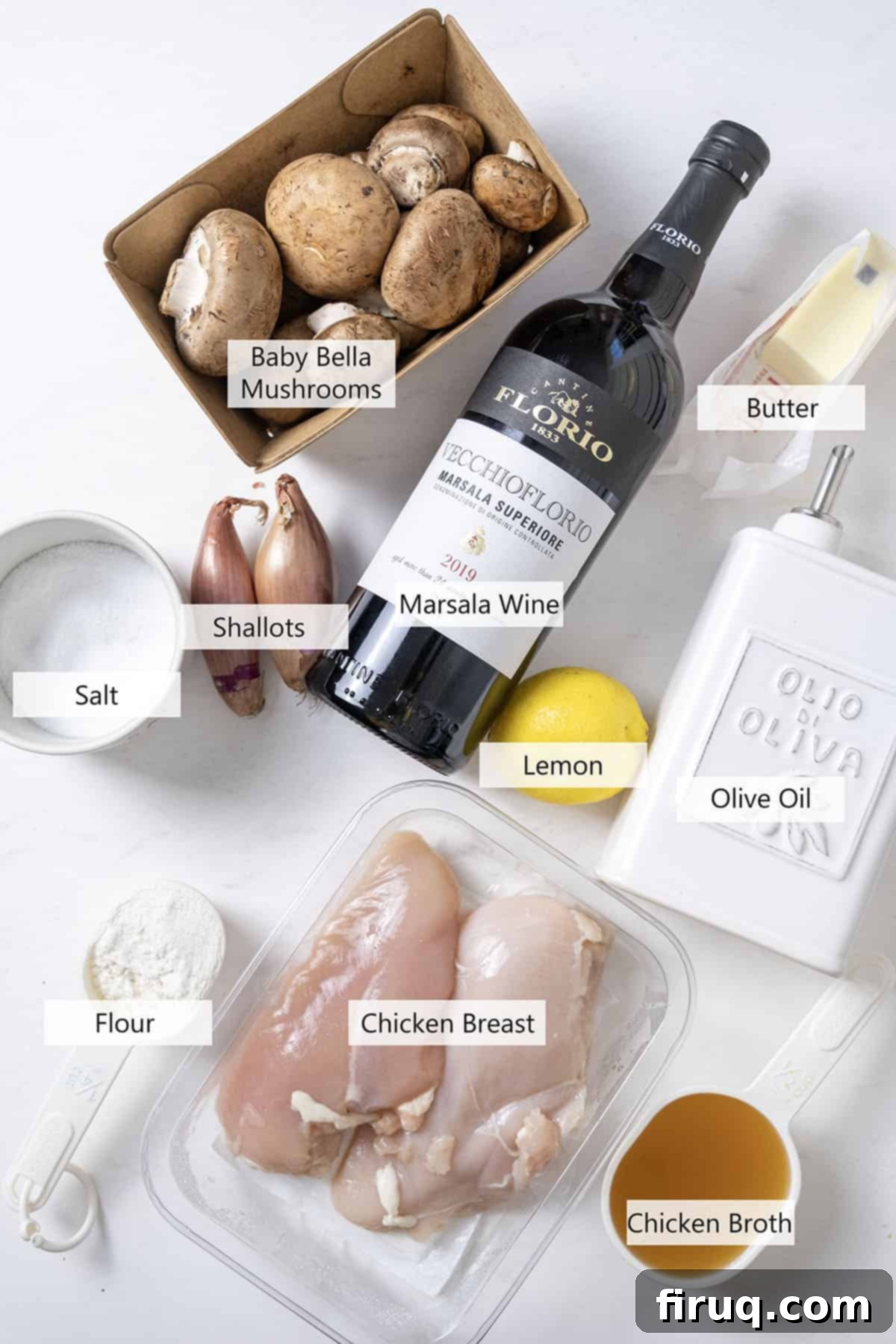
Getting the right ingredients is key to an exceptional Chicken Marsala. Here’s a detailed look at the core components and potential substitutions:
Chicken Cutlets: We recommend using boneless, skinless chicken breasts, halved lengthwise and pounded thin into cutlets. This ensures even cooking and tender results. While veal is the traditional choice for scaloppini, quality veal can be hard to source. Chicken is a fantastic, readily available alternative. If using veal, remember it’s typically thinner and will cook much faster, so adjust your frying time accordingly.
Marsala Wine: This is the star of the show and truly non-negotiable for an authentic Marsala flavor. There’s no perfect substitute that fully replicates its distinct, fortified wine profile. Crucially, opt for a proper Marsala wine from the wine aisle, not the “cooking Marsala” found near vinegars in supermarkets. Real Marsala wine offers a depth of flavor and complexity that cooking Marsala simply cannot match – plus, you can enjoy a glass with your meal! As a rule of thumb, if you wouldn’t drink it, don’t cook with it.
Flour: All-purpose flour is used here to dredge the chicken, creating a light coating that helps achieve a beautiful golden crust and, importantly, thickens the sauce. For those following a gluten-free diet, almond flour is an excellent alternative that works wonderfully.
Lemon: A squeeze of fresh lemon juice at the end of the cooking process is vital. It acts as a bright counterpoint to the rich, sometimes sweet, Marsala wine, balancing the overall flavor profile of the sauce and lifting the dish with its acidity.
Shallots: These delicate members of the onion family are perfect for Marsala. Shallots offer a milder, sweeter, and more nuanced flavor than onions, with a hint of garlic, truly doing the job of both and adding a sophisticated depth to the sauce.
Baby Bella Mushrooms: Also known as cremini mushrooms, these provide a robust, earthy flavor and meaty texture that stands up well to the rich sauce. You can substitute with white button mushrooms for a milder taste or even a mix of wild mushrooms for added complexity.
Chicken Broth: A good quality chicken broth forms the base of your sauce. Choose a low-sodium option to control the seasoning, or even better, use homemade chicken stock for unparalleled flavor and natural thickening properties.
Extra Virgin Olive Oil & Butter: Used for frying the chicken and enriching the sauce. The olive oil provides a high smoke point for searing, while the butter adds a luxurious creaminess and helps emulsify the sauce to perfection.
Salt & Pepper: Essential seasonings. Be sure to season your chicken generously before dredging and adjust the sauce’s seasoning to taste.
*For exact measurements and further details, please refer to the comprehensive recipe card below.
How to Craft the Perfect Restaurant-Style Chicken Marsala
Making Chicken Marsala at home is a rewarding process that yields truly delicious results. Follow these detailed steps for a flawless dish:
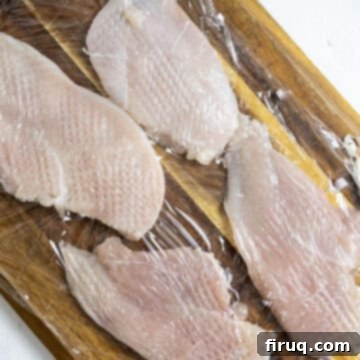
Step 1: Prepare the Chicken. Begin by slicing your chicken breasts in half horizontally to create thinner cutlets. Place them between two sheets of plastic wrap or in a large zip-top bag and use a meat mallet or the bottom of a heavy pan to pound them evenly to about ¼ to ½ inch thickness. This ensures they cook quickly and uniformly, remaining tender and juicy.
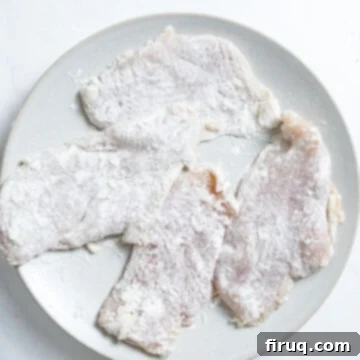
Step 2: Season and Dredge. Lightly season both sides of the chicken cutlets with salt and freshly ground black pepper. Then, place your flour on a wide, shallow plate. Dredge each chicken breast in the flour, ensuring it’s evenly coated on all sides. Gently shake off any excess flour. We don’t use egg in this recipe; the light flour coating is all you need for that perfect golden crust and to help thicken the sauce later.
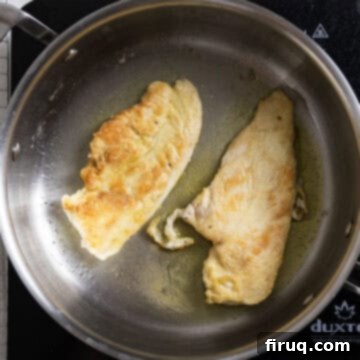
Step 3: Sear the Chicken. In a large, heavy-bottomed saucepan or skillet, heat the extra virgin olive oil over medium-high heat. Once shimmering, carefully add the dredged chicken cutlets, making sure not to overcrowd the pan (cook in batches if necessary). Fry for approximately 3 minutes per side, until they develop a beautiful golden-brown, crispy crust. The goal here isn’t to cook them through, but to build flavor and texture. Transfer the seared chicken to a wire rack set over a plate and set aside.
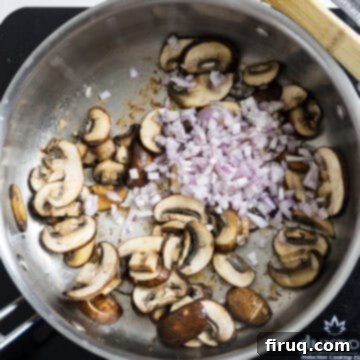
Step 4: Sauté Mushrooms and Shallots. Reduce the heat to medium. Add the sliced baby bella mushrooms to the same pan (no need for more oil, as mushrooms release their own liquid). Resist the urge to stir them constantly; let them sit undisturbed for 3-5 minutes to brown beautifully and develop a rich, savory flavor. Stir once, then allow them to brown again for another 3-5 minutes. Once the mushrooms have golden-brown and even slightly blackened edges, add the minced shallots and sauté for 2-3 minutes until softened and fragrant. You should see delicious brown bits (fond) clinging to the bottom of the pan – these are flavor gold!
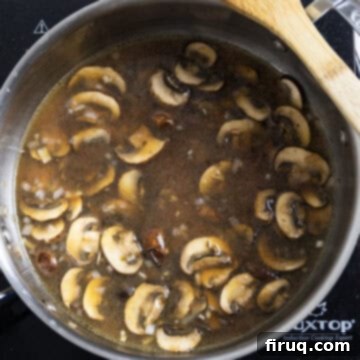
Step 5: Deglaze and Simmer the Sauce. Pour in the Marsala wine and chicken broth. Immediately use a wooden spoon to vigorously scrape all those flavorful brown bits (fond) from the bottom of the pan – this process is called deglazing and is crucial for building depth of flavor in your sauce. Bring the mixture to a gentle simmer and let it cook for about 8 minutes, allowing the alcohol to cook off and the sauce to begin reducing and concentrating in flavor.
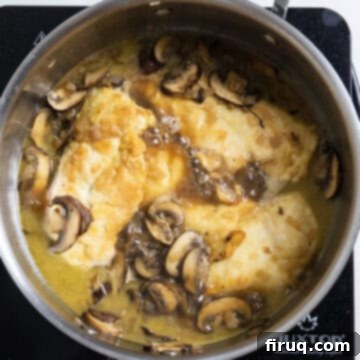
Step 6: Finish Cooking the Chicken. Gently return the seared chicken cutlets to the simmering Marsala sauce. Allow them to simmer in the sauce for approximately 10 minutes, or until they are cooked through and reach an internal temperature of 165°F (74°C). This allows the chicken to absorb the wonderful flavors of the sauce. Once fully cooked, remove the chicken from the pan and keep warm on your wire rack.
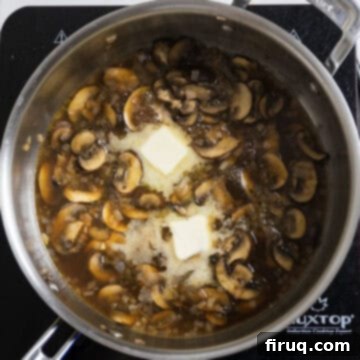
Step 7: Finish the Sauce. With the chicken removed, stir in the fresh lemon juice. Taste the sauce – the lemon juice provides a critical balance, cutting through the richness and sweetness of the Marsala. If it still tastes too sweet or heavy, add another small squeeze of lemon juice. Finally, stir in the butter, allowing it to melt and incorporate fully, adding a glossy finish and a velvety texture to your Marsala sauce.
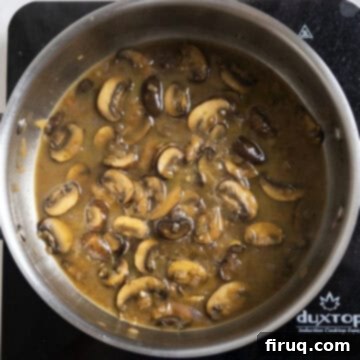
Step 8: Thicken and Serve. Continue to stir the sauce slowly over medium-low heat until it thickens to your desired consistency and lightens to a beautiful brown color. If you notice the sauce starting to separate (a common issue with reduction sauces), simply add a tiny splash of water or chicken broth and stir gently until it re-emulsifies. Once perfect, spoon the luscious Marsala sauce generously over your cooked chicken cutlets and any accompanying sides like rice, Crispy Garlic Parmesan Potatoes, or a decadent Mushroom Truffle Risotto.
There’s immense joy in recreating classic restaurant-style meals like Chicken Marsala at home. While it might not come with someone else doing the dishes, the satisfaction of preparing a dish that rivals your favorite Italian eatery is truly unmatched. For families looking to save on dining out or simply enjoy the comfort of home-cooked perfection, mastering recipes like Spaghetti Carbonara or Bucatini Amatriciana can transform your weeknights into delicious Italian feasts!
Pro-Tips for Perfect Chicken Marsala Every Time
Reduction sauces can be tricky, and achieving that perfect silky texture might take a few tries. However, the flavor is usually spot on if you follow the recipe closely. Here are some invaluable tips to help you conquer common challenges and achieve a flawless Marsala sauce:
- When the Sauce Doesn’t Thicken: This is a frequent hurdle for many making Chicken Marsala. It often stems from using a chicken broth lacking sufficient natural gelatin. While J. Kenji Lopez-Alt often suggests adding gelatin to his Marsala for guaranteed thickness, I prefer to keep things simple and traditional, just like my mom would. If your sauce isn’t thickening as expected, a quick fix is to sprinkle about ½ teaspoon of all-purpose flour evenly over the surface of the simmering sauce. Stir it gently but continuously; it should help thicken it beautifully without altering the flavor. Also, ensure you thoroughly coat your chicken cutlets in flour during the dredging step – this flour will also contribute to the sauce’s thickening as it simmers.
- Choosing Your Chicken Broth: The quality of your chicken broth significantly impacts the final sauce. A good, flavorful broth with some body will always yield better results. I personally find that Costco organic chicken broth works very well for its consistent quality. If you have homemade chicken stock, that’s even better, as it naturally contains gelatin that aids in thickening.
- The Art of Browning Mushrooms: Patience is paramount when browning mushrooms. When you first add them to the pan, resist the urge to stir immediately. Letting them sit undisturbed allows the moisture to evaporate and the Maillard reaction (the browning process) to occur, developing deep, savory flavors. If you stir too often, the mushrooms will steam rather than brown, resulting in a rubbery texture. You typically don’t need to add extra oil for mushrooms after frying the chicken, as they will absorb residual fat and release their own liquids.
- Preventing Sauce Separation: If your Marsala sauce appears to be separating (looking oily and watery simultaneously) before you pour it over the chicken, it often means the fat and liquid have split, usually due to too high heat or over-reduction. To rectify this, remove the pan from the heat briefly, add a very small amount of water (about a tablespoon), and stir slowly but vigorously with a whisk. This can often help re-emulsify the sauce back to its smooth, cohesive state.
- Pounding Chicken for Tenderness: Don’t skip pounding the chicken! This step is crucial not just for even cooking, but also for tenderizing the meat. Thinner cutlets cook quickly, preventing them from drying out, and ensure they remain succulent when simmered in the sauce.
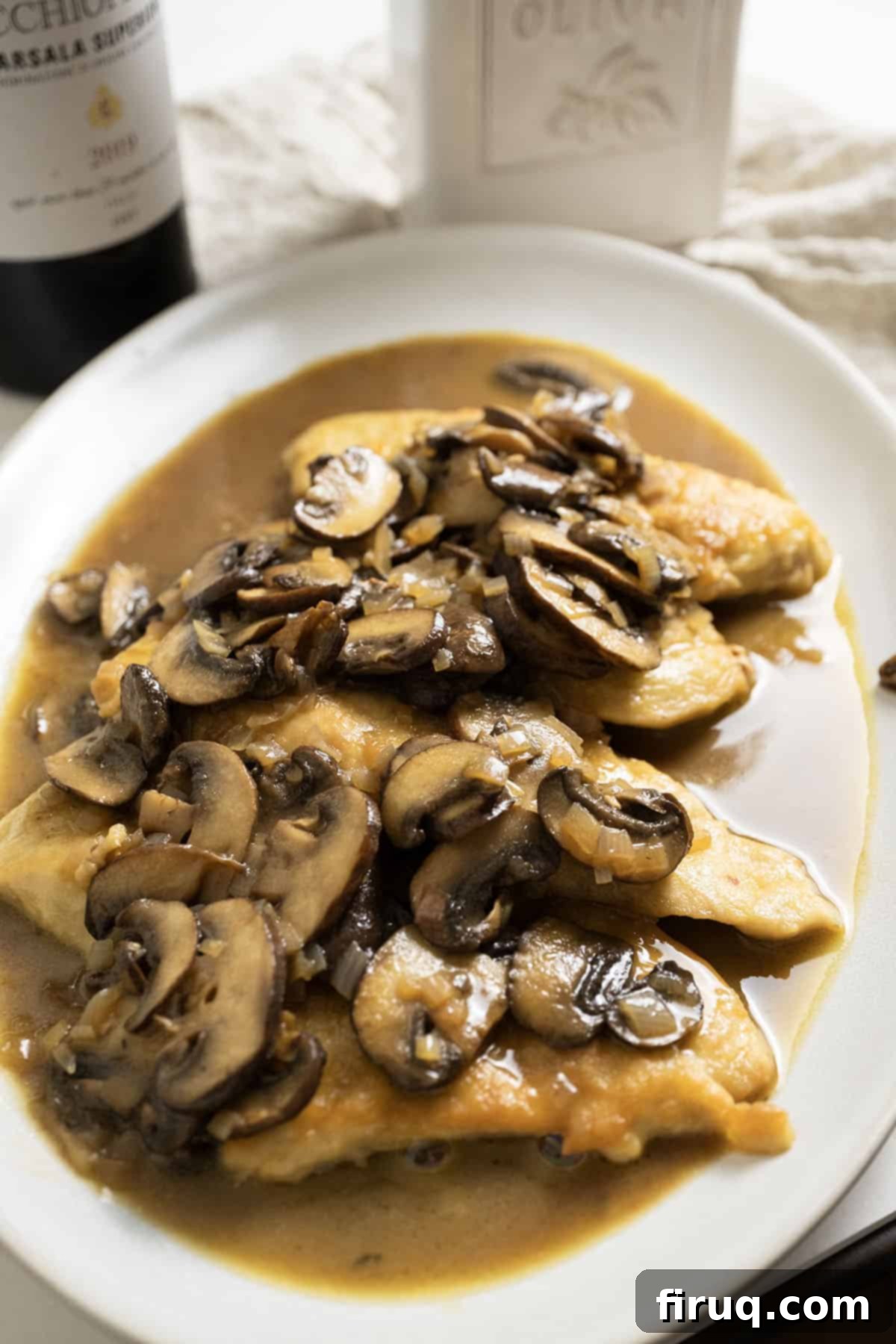
What to Serve with Your Decadent Chicken Marsala
Restaurant-style Chicken Marsala is a remarkably versatile dish, pairing beautifully with a wide array of side dishes. Here are some suggestions to complete your Italian feast:
- Vegetables: Complement the rich sauce with vibrant greens. Consider serving this dish with earthy Sautéed Rapini with Garlic, hearty Italian Lacinato Kale Recipe, or our famous BEST Garlic Parmesan Green Beans. A crisp Caesar salad made with our Traditional Caesar Dressing also provides a refreshing contrast.
- Pasta, Potatoes, or Rice? The choice is yours! While many enjoy Chicken Marsala over a simple bed of angel hair pasta or plain white rice, we highly recommend our Crispy Garlic Parmesan Potatoes or creamy mashed potatoes. These starchy sides perfectly soak up every drop of that exquisite Marsala sauce.
- Appetizer Suggestions: If you’re hosting a dinner party, kick things off with elegant yet simple Italian appetizers. Our Best Homemade Shrimp Cocktail or savory Italian Stuffed Baked Clams are excellent choices that will set the tone for a memorable meal.
- Dessert Pairings: Every restaurant-quality meal deserves a show-stopping dessert. Conclude your Italian feast with something truly special like our colorful Rainbow Cookie Cake or the exceptionally creamy Pistachio Cream Tiramisu for a perfect grand finale.
Chicken Marsala: Frequently Asked Questions
Chicken Marsala is incredibly versatile. It’s most commonly served with a starch like rice, creamy mashed potatoes, or crispy roasted potatoes. In many Italian-American restaurants, you’ll find it accompanied by a side of delicate angel hair pasta, allowing the rich Marsala sauce to be fully enjoyed.
The traditional choice for chicken Marsala sauce is baby bella mushrooms, also known as cremini mushrooms. Their robust, earthy flavor and firm texture hold up beautifully in the sauce. However, white button mushrooms can be used for a milder taste, or you can explore other varieties like shiitake or oyster mushrooms for a more adventurous flavor profile.
While you technically *could* use a dry white wine as a substitute, it’s important to understand that you would be fundamentally changing the traditional Marsala flavor profile that defines this dish. Marsala wine is a fortified wine with a unique, sweet and nutty characteristic that cannot be fully replicated. Using white wine will still yield a good mushroom sauce, but it will have a distinctly different, less authentic taste. For a true Chicken Marsala experience, a real Marsala wine is essential.
Chicken Marsala is best enjoyed fresh, but you can certainly prepare components in advance. You can pound and dredge the chicken up to a day ahead, storing it in the refrigerator. The Marsala sauce can also be made a day in advance and stored separately. Reheat the sauce gently on the stovetop, then add the freshly seared or reheated chicken to simmer briefly before serving.
Store any leftover Chicken Marsala in an airtight container in the refrigerator for up to 3-4 days. To reheat, gently warm it on the stovetop over low to medium heat, adding a splash of chicken broth or water if the sauce appears too thick or has separated. Avoid high heat, which can cause the sauce to break further or the chicken to dry out.
Discover More Restaurant-Style Italian Meals to Make at Home
- Restaurant-Style Chicken Francese
- Restaurant-Style Chicken Saltimbocca
- Restaurant-Style Chicken Scarpariello
- The BEST Chicken Pizzaiola
Please leave a comment and star rating below in the recipe card! I love to hear what you think of our recipes. Feel free to tag us on Instagram @vindelgiudice.
📖 Recipe
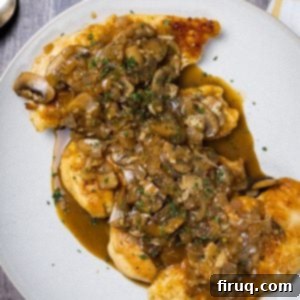
Restaurant-Style Chicken Marsala
Vincent DelGiudice
Pin Recipe
15 minutes
45 minutes
1 hour
Main Course
Italian
6
servings
320
kcal
Equipment
-
1 large saucepan
Ingredients
-
3
boneless, skinless chicken breasts, halved and pounded into cutlets -
8
oz
baby bella mushrooms, thinly sliced -
1
large shallot, finely minced -
1
cup
dry Marsala wine (do not use cooking Marsala) -
½
cup
low-sodium chicken broth or stock -
¼
cup
extra virgin olive oil -
1
teaspoon
kosher salt, or to taste -
2
tablespoons
fresh lemon juice -
¼
cup
all-purpose flour (or almond flour for gluten-free) -
1
tablespoon
unsalted butter -
½
teaspoon
freshly ground black pepper, or to taste
Instructions
-
Season the pounded chicken cutlets with salt and pepper. Place the flour on a shallow plate and dredge each chicken breast, ensuring an even coating on all sides. Gently shake off any excess. In a large saucepan or skillet, heat extra virgin olive oil over medium-high heat until shimmering. Carefully add the dredged chicken and fry for about 3 minutes per side until beautifully golden brown and crispy. This initial sear builds significant flavor and texture. Transfer the seared chicken to a wire rack and set aside.
-
Reduce the heat to medium. Add the sliced baby bella mushrooms to the same pan. To achieve optimal browning and deep flavor, resist stirring the mushrooms for the first 3-5 minutes, allowing them to sit and caramelize. Then, stir once and let them brown again for another 3-5 minutes. Once the mushrooms have developed good color and tenderized, add the minced shallots and sauté for 2-3 minutes until they are softened and fragrant. Make sure to scrape any delicious brown bits (fond) from the bottom of the pan as you stir.
-
Pour in the Marsala wine and chicken broth. Increase heat slightly and bring to a simmer, using a wooden spoon to scrape all the caramelized brown bits from the bottom of the pan (deglazing). Allow the sauce to simmer for about 7-8 minutes, or until it starts to reduce and thicken slightly. Carefully return the seared chicken breasts to the simmering sauce and continue to simmer for another 10 minutes, or until the chicken reaches an internal temperature of 165℉ (74°C).
-
Once the chicken is cooked through, carefully remove it from the pan and keep it warm on your wire rack. Stir in the fresh lemon juice into the sauce; taste and adjust as needed to balance the flavors. Finally, add the pat of unsalted butter and stir gently until it melts completely and is fully incorporated, making the sauce rich and glossy.
-
Pour the luscious Marsala sauce generously over the chicken cutlets. Serve immediately with your favorite sides and enjoy your homemade restaurant-style meal!
Notes
- Pounding the chicken breasts to an even thickness is paramount. It ensures that the chicken cooks uniformly and remains incredibly tender, preventing the edges from drying out while the center cooks. If you don’t have a meat tenderizer, cover the chicken with plastic wrap, place a heavy tray on top, and use your hand to press firmly and flatten them.
- The choice of Marsala wine is critical to the dish’s flavor. Seek out a true Marsala wine from the wine section of your grocery store or a liquor store. Avoid “cooking Marsala” found near vinegars, as it lacks the complex depth and nuanced sweetness of authentic Marsala and often contains added salt and preservatives. Remember the golden rule: if you wouldn’t drink it, don’t use it in your food.
- For superior browning of the mushrooms, allow them to sit undisturbed in the hot pan for several minutes before stirring. This crucial step permits the Maillard reaction to occur, developing rich, savory flavors and preventing them from becoming rubbery. Mushrooms release a lot of moisture, so you likely won’t need to add more oil after frying the chicken; the residual fat in the pan is usually sufficient.
- If your sauce starts to separate (appears oily and thin) after removing the chicken, simply take it off the heat, add a very small amount of water (about a tablespoon), and whisk gently until it comes back together into a smooth, emulsified sauce. This trick often helps re-stabilize the sauce.
Nutrition
Calories:
320
kcal
Carbohydrates:
12
g
Protein:
25
g
Fat:
14
g
Saturated Fat:
3
g
Polyunsaturated Fat:
1
g
Monounsaturated Fat:
8
g
Trans Fat:
0.1
g
Cholesterol:
78
mg
Sodium:
613
mg
Potassium:
649
mg
Fiber:
0.5
g
Sugar:
4
g
Vitamin A:
93
IU
Vitamin C:
4
mg
Calcium:
27
mg
Iron:
1
mg
Tried this recipe?
We’d love for you to Leave a Review!
